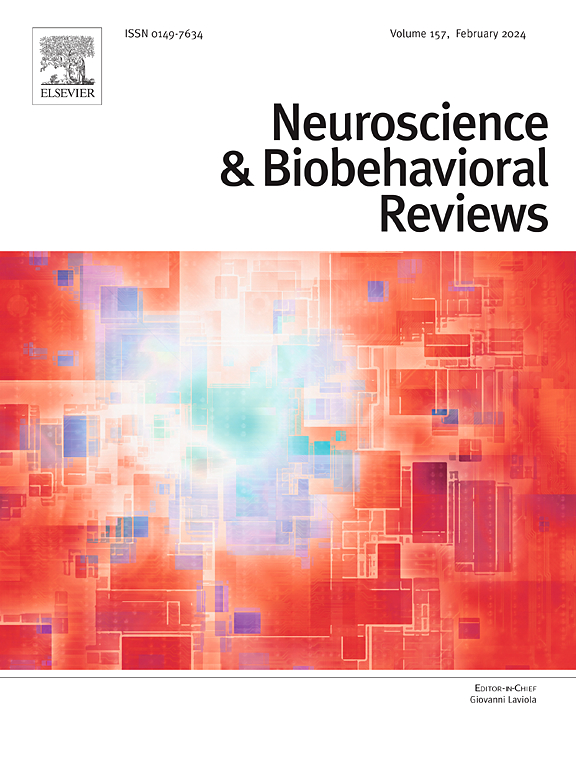When do facial emotions impact inhibitory control and response readiness? A gateway to understanding emotion processing
IF 7.9
1区 医学
Q1 BEHAVIORAL SCIENCES
引用次数: 0
Abstract
For the past 25 years, it has been widely believed that humans react automatically to emotional stimuli, as such responses are thought to be crucial for survival. However, recent empirical evidence from studies with healthy individuals suggests that the emotional valence of stimuli influences motor behavior only when it aligns with the individual's goals. In this review, we focused on research examining whether, when, and how emotional facial expressions influence reactive motor inhibition and response readiness in healthy young adults depending on their relevance to current goals. Following PRISMA guidelines, we identified 52 studies using the Stop-signal tasks and Go/No-go where participants responded with their hands or arms. After excluding 10 low-quality studies, 42 articles were retained for inclusion in our review. By selecting this subset of studies, we aimed to ensure consistency and comparability in the research. Despite the presence of several confounding factors that limit the interpretability of the findings, our results suggest that emotional stimuli do not influence motor behavior when they are irrelevant to the task. In contrast, when the emotional content is relevant to the task, the valence of emotional expressions tends to impact behavior. This effect is particularly evident in studies that employed within-subjects designs allowing to control for interindividual variability (n = 7). While further research is certainly needed, the current evidence suggests that emotional expressions do not automatically elicit behavioral responses. Instead, individual's current goals appear to play a pivotal role in determining how people respond to facial emotions.
面部情绪何时影响抑制控制和反应准备?这是理解情绪处理的途径
在过去的25年里,人们普遍认为人类对情绪刺激会自动做出反应,因为这种反应被认为对生存至关重要。然而,最近来自健康个体研究的经验证据表明,刺激的情绪效价只有在与个体目标一致时才会影响运动行为。在这篇综述中,我们重点研究了情绪面部表情是否、何时以及如何影响健康年轻人的反应性运动抑制和反应准备,这取决于它们与当前目标的相关性。根据PRISMA的指导方针,我们确定了52项使用停止信号任务和去/不去任务的研究,参与者用手或手臂做出反应。在排除了10项低质量研究后,我们的综述保留了42篇文章。通过选择这个研究子集,我们的目的是确保研究的一致性和可比性。尽管存在一些混杂因素限制了研究结果的可解释性,但我们的研究结果表明,当情绪刺激与任务无关时,情绪刺激不会影响运动行为。相反,当情绪内容与任务相关时,情绪表达的效价倾向于影响行为。这种效果在采用允许控制个体间变异性的受试者内设计的研究中尤为明显(n = 7)。虽然还需要进一步的研究,但目前的证据表明,情绪表达不会自动引发行为反应。相反,个人当前的目标似乎在决定人们对面部情绪的反应方面起着关键作用。
本文章由计算机程序翻译,如有差异,请以英文原文为准。
求助全文
约1分钟内获得全文
求助全文
来源期刊
CiteScore
14.20
自引率
3.70%
发文量
466
审稿时长
6 months
期刊介绍:
The official journal of the International Behavioral Neuroscience Society publishes original and significant review articles that explore the intersection between neuroscience and the study of psychological processes and behavior. The journal also welcomes articles that primarily focus on psychological processes and behavior, as long as they have relevance to one or more areas of neuroscience.

 求助内容:
求助内容: 应助结果提醒方式:
应助结果提醒方式:


